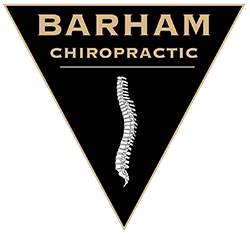How Can Chiropractic Care in Sacramento CA Improve Quality of Life for Parkinson's Disease Patients?

Here at Barham Chiropractic, we really care about our patients. If you or someone you love has Parkinson's disease, you might be looking for ways to feel better and handle the things this disease can throw at you.
While medicines and special exercises are often used, another cool option to help is going to the chiropractor. We'd love to see you at our office, Sacramento CA Chiropractor.
In this article, we're going to talk about how going to the chiropractor can make life better for people with Parkinson's disease. We're here to help answer any questions you might have and be with you on your journey.
If you want to learn more about how Chiropractic Care can help with Parkinson's Disease, we have another article about that here.
Understanding Parkinson's Disease in Sacramento CA
Parkinson's disease is a neurological disorder that affects the brain and the body's ability to move. It occurs when nerve cells in the brain that control movement stop working correctly and begin to die off. The most common sign of Parkinson's disease is tremors or shaking in the hands, arms, legs, or face when at rest.
Traditionally, medication has been used to improve symptoms of Parkinson's symptoms. However, chiropractic care can also improve brain and muscle function and may be a complementary treatment option.
This can help increase joint mobility and reduce muscle stiffness, which can relieve Parkinson's symptoms. Chiropractic care may also help manage mental function and slow the progression of the disease. This is because the nervous system, which controls the body's movements, is closely tied to cognitive function. While there is no cure for Parkinson's disease, chiropractic care can be an effective way to help manage the symptoms associated with the disease and improve the quality of life for those suffering from it.
Chiropractic Care for Parkinson's Disease Patients
Parkinson's disease can cause problems such as tremors, stiffness, and difficulty with balance and coordination. Chiropractic care can play a vital role in improving the quality of life for people with this condition by enhancing nerve function and reducing symptoms through chiropractic adjustments. Individuals suffering from Parkinson's disease may experience reduced symptoms and improved mobility. Chiropractic care can also help with any lower back pain or discomfort that Parkinson's patients may experience due to the disease.
Additionally, it can enhance a patient's overall quality of life by reducing pain, improving mobility and function, and allowing them to engage more fully in activities they enjoy while maintaining a sense of independence. While chiropractic care is not a cure for Parkinson's disease, it can be a helpful complementary therapy to manage symptoms and improve the quality of life for those living with the condition. This can be particularly important since people with Parkinson's disease are at a higher risk for developing back pain due to the muscle stiffness and imbalance that can occur. In addition to physical benefits, receiving chiropractic care can also improve a patient's overall quality of life.
By reducing pain and improving mobility and function, patients may be able to engage more fully in activities they enjoy and maintain a sense of independence. Overall, while chiropractic care should not be considered a cure for Parkinson's disease, it can be a helpful complementary therapy to improve symptoms and quality of life for those living with the condition.
Techniques Used in Chiropractic Care
Chiropractors employ techniques such as adjustments that attempt to make the brain and body work better. This technique leads to improved well-being and prevents the progression of the disease's effects, which can affect both men and women. Chiropractic care has emerged as an effective technique for managing the symptoms associated with Parkinson's disease and improving nerve and muscle function with no side effects. Chiropractic care focuses on the use of spinal health manipulation and other techniques to treat musculoskeletal disorders, especially those affecting the spine.
Here are some of the most common techniques used in regular chiropractic care:
1. Spinal Manipulation
This technique involves using hands or a device to apply controlled force to the spine manually. The goal of spinal manipulation is to restore mobility in joints affected by tissue injury caused by a traumatic event or repetitive stress.
2. Mobilization
Mobilization is a safe and effective technique for improving muscle control, joint function and reducing pain and stiffness associated with joint dysfunction. If you are experiencing a poor range of motion, joint pain, or stiffness, speak with a qualified healthcare provider to determine if mobilization may be an appropriate treatment option for you within the patient’s comfort level to increase their range of motion.
3. Cox Flexion-Distraction:
Cox Flexion-Distraction is a chiropractic technique that aims to relieve back pain and promote spinal health. The technique involves the use of a specially designed table that is capable of flexing and releasing the spinal joints in a gentle and controlled manner. This type of chiropractic treatment is typically preferred for those suffering from lower back pain, herniated discs, or spinal stenosis.
4. Instrument-Assisted Manipulation
Instrument-Assisted Manipulation is a form of manual therapy used by trained chiropractors, physical therapists, and massage therapists. The technique uses special tools made of varying materials, including plastic, stainless steel, or aluminum. The therapist gently applies the tool to the soft tissues of the body, such as muscles, tendons, fascia, or ligaments, to treat a range of musculoskeletal disorders and injuries.
5. Activator Method
The Activator Method is a chiropractic technique that uses a small, handheld instrument to apply a gentle and quick force to specific areas of the spine. The instrument, known as an Activator Adjusting Instrument, delivers a precise and controlled impulse to the targeted vertebrae, which aims to restore proper alignment and range of motion. The methods for managing this kind of disease are designed as a less forceful alternative to manual adjustments, making it an ideal choice for patients who may be uncomfortable with the traditional "cracking" and popping sounds often associated with chiropractic adjustments.
6. Gonstead Technique
The Gonstead technique emphasizes a holistic approach to healthcare and is based on the principle that a healthy spine is essential for maintaining overall health and wellness. This technique is often used to treat a variety of musculoskeletal conditions, including back pain, neck pain, headaches, and sciatica. It is also commonly used to improve athletic performance and prevent injuries in athletes.
7. Thompson Technique
A segmented approach to chiropractic care The Thompson Technique, also known as the Thompson Terminal Point Technique or the Drop Table Technique, is a specific approach to chiropractic care that focuses on adjusting the spine in a segmented manner. The Thompson Technique is characterized by its segmented approach to spinal adjustments. By working on one section of the spine at a time, chiropractors can more effectively identify and correct misalignments or subluxations. This technique is gentle and effective, making it a popular choice for patients who are experiencing chronic pain or mobility issues.
8. Diversified Technique
The Diversified technique is widely used by chiropractors and is often used to treat conditions such as back pain, neck pain, headaches, sciatica, migraines, and other musculoskeletal issues. The technique is safe, effective, and non-invasive, making it popular with patients seeking natural ways to improve their health and well-being. to address the problem area and is commonly used to treat sports-related injuries.
9. Flexion-Distraction
Flexion-Distraction is a chiropractic technique that involves the use of a specialized table to treat various spinal conditions. This table has a movable section that the practitioner adjusts to various angles and positions, allowing for gentle stretching and decompression of the spine.
During a Flexion-Distraction session, the chiropractor will have the patient lie face down on the table. The chiropractor will then adjust the table to the appropriate angle and position, and use gentle pressure to stretch and flex the spine.
10. Active Release Technique
This is a method aimed at relieving muscular pain or tightness. The practitioner applies pressure while guiding you through specific movements to release soft tissue restrictions. Overall, these techniques aim to address pain, and inflammation, and improve joint mobility, spinal alignment, and other health problems related to the nervous system.
Other Alternative Treatments for Parkinson's Disease
1. Chiropractic Care
Chiropractors use various techniques to manipulate the spine and other joints in the body, in order to improve overall health and alleviate pain and discomfort. This can include spinal adjustments, soft tissue therapy, exercise and nutritional advice, and other complementary therapies. Chiropractic care is often used to treat conditions such as back and neck pain, headaches, joint pain, and sports injuries.
2. Acupuncture
Acupuncture involves the insertion of fine needles into specific points on the body to promote a healing response. Acupuncture can reduce tremors, improve balance and coordination, and decrease muscle stiffness.
3. Massage Therapy
Massage therapy can help to relieve muscle pain and stiffness, improve circulation, and reduce stress. Gentle massage can also help to stimulate the release of natural chemicals in the brain that promote relaxation and a sense of well-being.
4. Nutritional Therapy
Eating a healthy diet that is rich in antioxidants, vitamins, and minerals can help to support the health of the brain and nervous system. Nutritional supplements, such as CoQ10, omega-3 fatty acids, and vitamin E, may also be beneficial in reducing symptoms of Parkinson’s disease.
5. Herbal Medicine
There are a number of herbs that may be helpful in supporting the health of the nervous system and reducing symptoms of Parkinson’s disease, including ashwagandha, ginkgo biloba, and bacopa. However, it is important to speak with a qualified healthcare professional before consuming herbal supplements, as they may interact with other medications you are taking.
How long does it take for Chiropractic Care to help with Parkinson's disease?
First of all, we want you to know that I really care about what you're going through. Dealing with Parkinson's disease can be tough. We have been serving patients with Chiropractic care over 33 years and we've seen how chiropractic care can help people in many ways, including those with Parkinson's.
Here's the thing though - everyone is different. This means the time it takes for chiropractic care to help can change from person to person. Some people might start feeling better after just a few weeks of treatments, but for others it might take a bit longer.
You should know that chiropractic care isn't a cure for Parkinson's. But, it can help make some of the symptoms better and improve how well you can move around. It can also help make life more comfortable and enjoyable.
The most important thing is to keep trying, be patient, and stay positive. We're on this journey together. If you have any questions or worries, don't be shy to ask. We're here to help.
If you or a loved one, is considering chiropractic care to help with the symptoms of Parkinson's disease, please, contact us during our office hours or use the contact information on our New Patient Offer.
We're here to support and care for you. You're not alone, and together we can explore how chiropractic care can make a positive difference in your life.
Contact us today to get started.
Reference
Clinically reviewed by Steven Barham, D.C.
- Updated on June 30, 2023
This site is for informational and educational purposes only. The information contained herein does not constitute the rendering of insurance advice, chiropractic healthcare advice, or the provision of treatment or treatment recommendations by our providers. Browsing this site does not establish a professional relationship with Barham Chiropractic or any member of the Barham Chiropractic staff.
If you have any concerns, questions, or comments about this article please reach out to our content moderation team at:
barhamcontent@gmail.com
You can also reach out to our Sacramento CA Chiropractor Office via phone call at (916) 542-6273 during office hours.
OFFICE HOURS
Monday
7:15am - 11:45am
2:00pm - 5:45pm
Tuesday
8:00am - 11:45am
Wednesday
7:15am - 11:45am
2:00pm - 5:45pm
Thursday
8:00am - 10:45am
Friday
7:15am - 11:45am
2:00pm - 5:45pm
Saturday & Sunday
Closed
Barham Chiropractic
3441 Arden Wy
Sacramento, CA 95825




